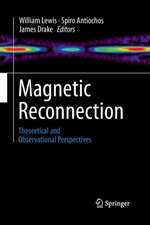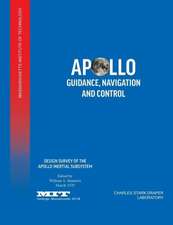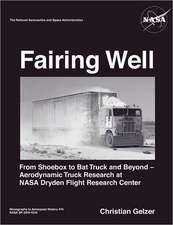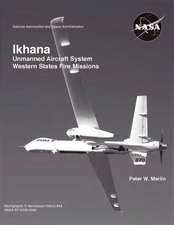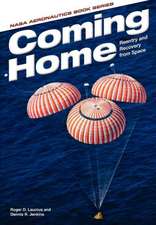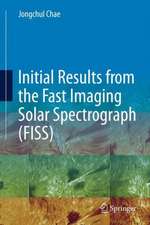The Magnetodiscs and Aurorae of Giant Planets: Space Sciences Series of ISSI, cartea 50
Editat de Karoly Szego, Nicholas Achilleos, Chris Arridge, Sarah Badman, Peter Delamere, Denis Grodent, Margaret Galland Kivelson, Philippe Louarnen Limba Engleză Hardback – 16 oct 2015
Readers will find grouped together here the most recent observations, current theoretical models and present understanding of the coupled atmosphere, magnetosphere and solar wind system. The book begins with a general discussion of mass, energy and momentum transport in magnetodiscs. The physics of partially ionized plasmas of the giant planet magnetodiscs is of general interest throughout the field of space physics, heliophysics and astrophysical plasmas; therefore, understanding the basic physical processes associated with magnetodiscs has universal applications. The second chapter characterizes the solar wind interaction and auroral responses to solar wind driven dynamics. The third chapter describes the role of magnetic reconnection and the effects on plasma transport. Finally, the last chapter characterizes the spectral and spatial properties of auroral emissions, distinguishing between solar wind drivers and internal driving mechanisms. The in-depth reviews provide an excellent reference for future research in this discipline.
| Toate formatele și edițiile | Preț | Express |
|---|---|---|
| Paperback (1) | 642.51 lei 6-8 săpt. | |
| Springer – 23 aug 2016 | 642.51 lei 6-8 săpt. | |
| Hardback (1) | 654.30 lei 3-5 săpt. | |
| Springer – 16 oct 2015 | 654.30 lei 3-5 săpt. |
Din seria Space Sciences Series of ISSI
- 18%
 Preț: 1019.49 lei
Preț: 1019.49 lei - 15%
 Preț: 647.27 lei
Preț: 647.27 lei - 18%
 Preț: 959.50 lei
Preț: 959.50 lei - 18%
 Preț: 1406.98 lei
Preț: 1406.98 lei - 18%
 Preț: 904.91 lei
Preț: 904.91 lei - 18%
 Preț: 1123.35 lei
Preț: 1123.35 lei - 18%
 Preț: 908.36 lei
Preț: 908.36 lei - 18%
 Preț: 903.93 lei
Preț: 903.93 lei - 20%
 Preț: 577.35 lei
Preț: 577.35 lei - 18%
 Preț: 1115.46 lei
Preț: 1115.46 lei - 18%
 Preț: 1009.70 lei
Preț: 1009.70 lei - 18%
 Preț: 796.61 lei
Preț: 796.61 lei - 18%
 Preț: 739.81 lei
Preț: 739.81 lei - 18%
 Preț: 899.21 lei
Preț: 899.21 lei - 18%
 Preț: 1126.52 lei
Preț: 1126.52 lei - 18%
 Preț: 1016.01 lei
Preț: 1016.01 lei - 18%
 Preț: 1398.80 lei
Preț: 1398.80 lei - 15%
 Preț: 545.15 lei
Preț: 545.15 lei -
 Preț: 436.35 lei
Preț: 436.35 lei -
 Preț: 430.59 lei
Preț: 430.59 lei - 18%
 Preț: 983.65 lei
Preț: 983.65 lei -
 Preț: 412.78 lei
Preț: 412.78 lei - 18%
 Preț: 956.50 lei
Preț: 956.50 lei - 18%
 Preț: 950.52 lei
Preț: 950.52 lei - 18%
 Preț: 951.29 lei
Preț: 951.29 lei - 24%
 Preț: 1060.10 lei
Preț: 1060.10 lei - 18%
 Preț: 958.88 lei
Preț: 958.88 lei - 24%
 Preț: 788.94 lei
Preț: 788.94 lei - 15%
 Preț: 707.00 lei
Preț: 707.00 lei - 18%
 Preț: 951.59 lei
Preț: 951.59 lei - 24%
 Preț: 1052.14 lei
Preț: 1052.14 lei - 20%
 Preț: 574.08 lei
Preț: 574.08 lei - 18%
 Preț: 964.10 lei
Preț: 964.10 lei - 15%
 Preț: 647.40 lei
Preț: 647.40 lei - 18%
 Preț: 961.55 lei
Preț: 961.55 lei - 18%
 Preț: 964.23 lei
Preț: 964.23 lei
Preț: 654.30 lei
Preț vechi: 769.77 lei
-15% Nou
Puncte Express: 981
Preț estimativ în valută:
125.23€ • 130.23$ • 104.79£
125.23€ • 130.23$ • 104.79£
Carte disponibilă
Livrare economică 22 februarie-08 martie
Preluare comenzi: 021 569.72.76
Specificații
ISBN-13: 9781493933945
ISBN-10: 1493933949
Pagini: 333
Ilustrații: V, 333 p.
Dimensiuni: 155 x 235 x 25 mm
Greutate: 0.8 kg
Ediția:1st ed. 2016
Editura: Springer
Colecția Springer
Seria Space Sciences Series of ISSI
Locul publicării:New York, NY, United States
ISBN-10: 1493933949
Pagini: 333
Ilustrații: V, 333 p.
Dimensiuni: 155 x 235 x 25 mm
Greutate: 0.8 kg
Ediția:1st ed. 2016
Editura: Springer
Colecția Springer
Seria Space Sciences Series of ISSI
Locul publicării:New York, NY, United States
Cuprins
Giant Planet Magnetodiscs and Aurorae: An Introduction.- Planetary Magnetodiscs: Some Unanswered Questions.- A brief review of ultraviolet auroral emissions on giant planets.- Solar wind and internally driven dynamics: influences on magnetodiscs and auroral responses.- Auroral Processes at the Giant Planets: Energy Deposition, Emission Mechanisms, Morphology and Spectra.- Magnetic reconnection and associated transient phenomena within the magnetospheres of Jupiter and Saturn.- Transport of Mass, Momentum and Energy in Planetary Magnetodisc Regions.- Sources of local time asymmetries in magnetodiscs.
Notă biografică
Prof. Karoly Szego is Professor Emeritus at the Wigner Research Centre for Physics of the Hungarian Academy of Sciences. He has published over 140 scientific papers in the field of Solar System exploration. He was involved in several space missions; most recently as Co-Invegistator (CoI) in the CAPS experiment of the CASSINI mission; CoI in the ROSETTA orbiter Plasma Consortium; CoI in the Aspera team, Venus Express mission; CoI in the Serena team, BepiColombo mission; and CoI in the PEP experiment, JUICE mission. He has served on various national and international scientific bodies and is a member of the International Academy of Astronautics.
Dr. Nicholas Achilleos started his research career working in stellar astrophysics, in particular the magnetic field structures of white dwarf stars and their effects on radiative transfer, as well as the structure of the ‘halo’ region found in some accreting systems with magnetic white dwarfs. He then moved into planetary work, moving to UCL and working on a global, time-dependent circulation model of the Jovian thermosphere. A paper published using this model in 2001 was later awarded a ‘10th Anniversary Research Highlight’ of the New Journal of Physics. He then worked in industry as a software engineer for a short time before becoming a mission planner / support scientist for the Cassini magnetometer team in 2002. This allowed him to contribute to research which made use of the Cassini magnetic and other datasets. After moving to UCL to take up a lectureship in 2007, he worked with two UCL colleagues to produce a magnetodisc model of Saturn, adapted from Caudal’s original Jovian model, and the first two papers based on this model were published in 2010. This experience with magnetometer data and modelling of magnetodisc structure makes him a suitable editor for this particular volume.
Dr. Chris Arridge is a Royal Society Research Fellow and Lecturer in the Department of Physics at Lancaster University. He obtained a PhD from Imperial College London on the analysis and modelling of Cassini data from Saturn. From 2006 to 2012 he held a series of postdoctoral positions and fellowships at University College London's Mullard Space Science Laboratory. His research focuses on the structureand dynamics of planetary magnetospheres and he is involved in the MAG and CAPS teams for the Cassini mission to Saturn, and the J-MAG and PEP teams for the JUICE mission to Jupiter.
Dr. Sarah Badman studies solar-planetary interactions and has held research fellowships in Japan and the United Kingdom. She is a team member on the Cassini mission to Saturn and has been an investigator on several ground- and space-based auroral observing campaigns targeting Saturn, Jupiter and Uranus.
Dr. Peter Delamere is an Associate Professor of Space Physics at the University of Alaska Fairbanks. His research focuses on comparative magnetospheric physics with anemphasis on the numerical simulation of space plasmas using hybrid (kinetic ion, fluid electron) and multi-fluid techniques. Dr. Delamere has studied the solar wind interaction with the giant magnetospheres of Jupiter and Saturn, comets, Pluto and the plasma interaction at Io. In addition, he has developed models to study the flow of mass and energy through the inner magnetospheres of Jupiter and Saturn to study the internally-driven dynamics of these systems.
Prof. Denis Grodent is a planetary scientist who specialized in the study of upper atmospheres and magnetospheres of the giant planets. He is head of the Laboratory for Planetary and Atmospheric Physics at the University of Liège. Prof. Grodent developed a 20-year expertise in obtaining, analyzing, interpreting and modeling atmospheric emissions of the giant planets. These observations were obtained through routine use of the Hubble Space Telescope UV cameras for high-resolution spectroscopy and high-resolution imaging. He developed models of the auroral thermal structures of Jupiter and Saturn with Monte-Carlo and two-stream codes and H2 and H3+ UV and IR spectral generators. D. Grodent has published over 90 scientific papers in refereed international journals (ADS h-index=28) as a first or co-author and contributed to more than 200 presentations in international congresses and meetings. He was involved as a PI or a Co-I in 23 observing programs with the Hubble Space telescope and oneobserving program with the Chandra X-ray Space Telescope. He is a Science Team Member of the NASA/Juno mission through his implication in the UVS camera. Prof. Grodent is a co-investigator of the PEP (Particle Environment Package), UVS (Ultraviolet Spectrograph) and MAJIS (Moons And Jupiter Imaging Spectrometer) instruments onboard the ESA/JUICE mission. He is also Associate Scientist of the UVIS (Ultraviolet Imaging Spectrograph) onboard the NASA-ESA/Cassini mission and Team Member of the Cassini/MAPS (Magnetospheric And Plasma Science) working group. Prof. Denis Grodent is teaching several courses on Earth and planetary atmospheres and magnetospheres in the Master in Space Sciences of the Université de Liège.
Prof. Margaret Kivelson is a Distinguished Professor of Space Physics, Emeritus, at UCLA and a Research Professor at the University of Michigan. She is a member of the U. S. National Academy of Sciences and recipient of the Fleming medal of the American Geophysical Union and of the Alfven medal of the European Geophysical Union. She has published more than 360 papers on space physics.
Dr. Philippe Louarn is a senior scientist at the Centre National de la Recherche Scientifique (CNRS, France), working at the Institut de Recherche et Astrophysique and Planétologie (IRAP, Toulouse). His expertizes cover data analysis, theory and simulations of space plasma processes with a particular interest for the interpretation of waves and particles observations. Most of his works are related to the analysis of phenomena that develop in the ionized environments of solar system objects. This includes studies on the radio wave generation, particle acceleration and plasma heating processes. He also studied the large-scale magnetospheric activity of giant planets (Jupiter, Saturn) and works on problems related to the stability of magnetic structures.
Dr. Nicholas Achilleos started his research career working in stellar astrophysics, in particular the magnetic field structures of white dwarf stars and their effects on radiative transfer, as well as the structure of the ‘halo’ region found in some accreting systems with magnetic white dwarfs. He then moved into planetary work, moving to UCL and working on a global, time-dependent circulation model of the Jovian thermosphere. A paper published using this model in 2001 was later awarded a ‘10th Anniversary Research Highlight’ of the New Journal of Physics. He then worked in industry as a software engineer for a short time before becoming a mission planner / support scientist for the Cassini magnetometer team in 2002. This allowed him to contribute to research which made use of the Cassini magnetic and other datasets. After moving to UCL to take up a lectureship in 2007, he worked with two UCL colleagues to produce a magnetodisc model of Saturn, adapted from Caudal’s original Jovian model, and the first two papers based on this model were published in 2010. This experience with magnetometer data and modelling of magnetodisc structure makes him a suitable editor for this particular volume.
Dr. Chris Arridge is a Royal Society Research Fellow and Lecturer in the Department of Physics at Lancaster University. He obtained a PhD from Imperial College London on the analysis and modelling of Cassini data from Saturn. From 2006 to 2012 he held a series of postdoctoral positions and fellowships at University College London's Mullard Space Science Laboratory. His research focuses on the structureand dynamics of planetary magnetospheres and he is involved in the MAG and CAPS teams for the Cassini mission to Saturn, and the J-MAG and PEP teams for the JUICE mission to Jupiter.
Dr. Sarah Badman studies solar-planetary interactions and has held research fellowships in Japan and the United Kingdom. She is a team member on the Cassini mission to Saturn and has been an investigator on several ground- and space-based auroral observing campaigns targeting Saturn, Jupiter and Uranus.
Dr. Peter Delamere is an Associate Professor of Space Physics at the University of Alaska Fairbanks. His research focuses on comparative magnetospheric physics with anemphasis on the numerical simulation of space plasmas using hybrid (kinetic ion, fluid electron) and multi-fluid techniques. Dr. Delamere has studied the solar wind interaction with the giant magnetospheres of Jupiter and Saturn, comets, Pluto and the plasma interaction at Io. In addition, he has developed models to study the flow of mass and energy through the inner magnetospheres of Jupiter and Saturn to study the internally-driven dynamics of these systems.
Prof. Denis Grodent is a planetary scientist who specialized in the study of upper atmospheres and magnetospheres of the giant planets. He is head of the Laboratory for Planetary and Atmospheric Physics at the University of Liège. Prof. Grodent developed a 20-year expertise in obtaining, analyzing, interpreting and modeling atmospheric emissions of the giant planets. These observations were obtained through routine use of the Hubble Space Telescope UV cameras for high-resolution spectroscopy and high-resolution imaging. He developed models of the auroral thermal structures of Jupiter and Saturn with Monte-Carlo and two-stream codes and H2 and H3+ UV and IR spectral generators. D. Grodent has published over 90 scientific papers in refereed international journals (ADS h-index=28) as a first or co-author and contributed to more than 200 presentations in international congresses and meetings. He was involved as a PI or a Co-I in 23 observing programs with the Hubble Space telescope and oneobserving program with the Chandra X-ray Space Telescope. He is a Science Team Member of the NASA/Juno mission through his implication in the UVS camera. Prof. Grodent is a co-investigator of the PEP (Particle Environment Package), UVS (Ultraviolet Spectrograph) and MAJIS (Moons And Jupiter Imaging Spectrometer) instruments onboard the ESA/JUICE mission. He is also Associate Scientist of the UVIS (Ultraviolet Imaging Spectrograph) onboard the NASA-ESA/Cassini mission and Team Member of the Cassini/MAPS (Magnetospheric And Plasma Science) working group. Prof. Denis Grodent is teaching several courses on Earth and planetary atmospheres and magnetospheres in the Master in Space Sciences of the Université de Liège.
Prof. Margaret Kivelson is a Distinguished Professor of Space Physics, Emeritus, at UCLA and a Research Professor at the University of Michigan. She is a member of the U. S. National Academy of Sciences and recipient of the Fleming medal of the American Geophysical Union and of the Alfven medal of the European Geophysical Union. She has published more than 360 papers on space physics.
Dr. Philippe Louarn is a senior scientist at the Centre National de la Recherche Scientifique (CNRS, France), working at the Institut de Recherche et Astrophysique and Planétologie (IRAP, Toulouse). His expertizes cover data analysis, theory and simulations of space plasma processes with a particular interest for the interpretation of waves and particles observations. Most of his works are related to the analysis of phenomena that develop in the ionized environments of solar system objects. This includes studies on the radio wave generation, particle acceleration and plasma heating processes. He also studied the large-scale magnetospheric activity of giant planets (Jupiter, Saturn) and works on problems related to the stability of magnetic structures.
Textul de pe ultima copertă
Readers will find grouped together here the most recent observations, current theoretical models and present understanding of the coupled atmosphere, magnetosphere and solar wind system. The book begins with a general discussion of mass, energy and momentum transport in magnetodiscs. The physics of partially ionized plasmas of the giant planet magnetodiscs is of general interest throughout the field of space physics, heliophysics and astrophysical plasmas; therefore, understanding the basic physical processes associated with magnetodiscs has universal applications. The second chapter characterizes the solar wind interaction and auroral responses to solar wind driven dynamics. The third chapter describes the role of magnetic reconnection and the effects on plasma transport. Finally, the last chapter characterizes the spectral and spatial properties of auroral emissions, distinguishing between solar wind drivers and internal driving mechanisms. The in-depth reviews provide an excellent reference for future research in this discipline.
Caracteristici
Provides a unique synthesis and comprehensive overview of the giant magnetospheres and their aurorae Presents an interdisciplinary approach to understanding the coupled system from the solar wind to the atmosphere Combines the latest observations with current theory and models Contains sufficient breadth for students of magnetospheric and space physics to use as a reference for future research





